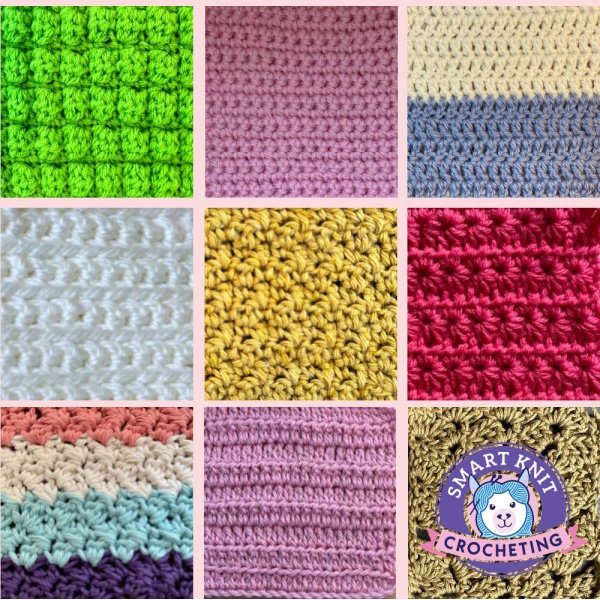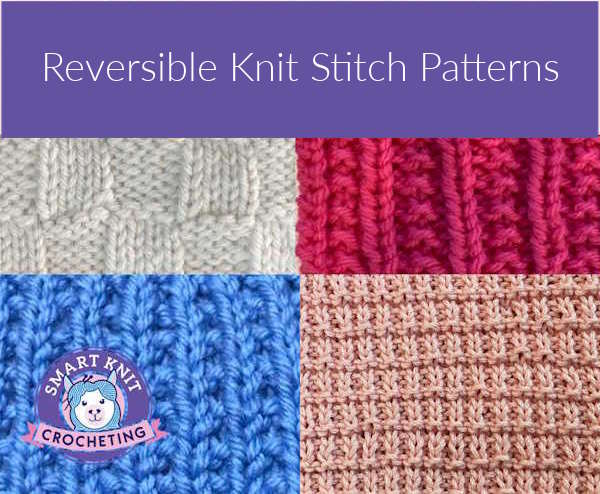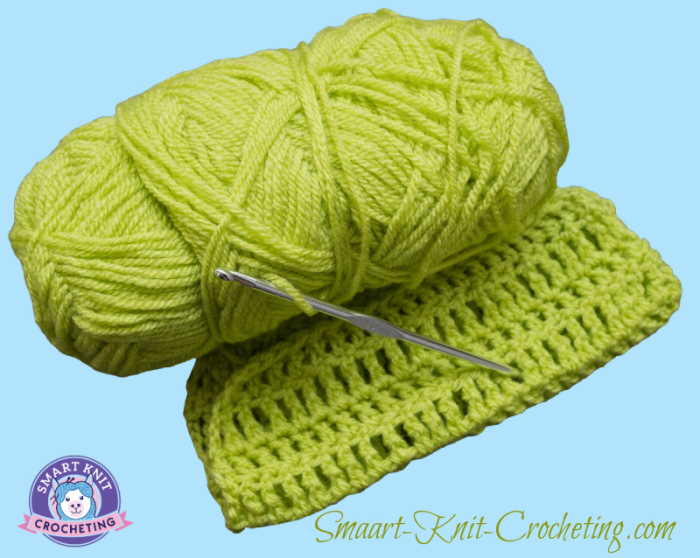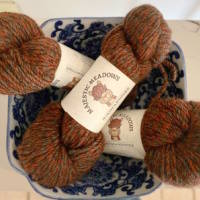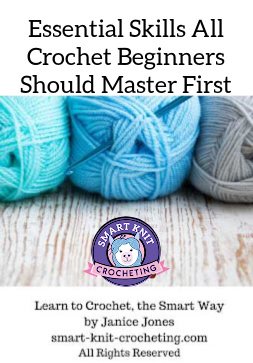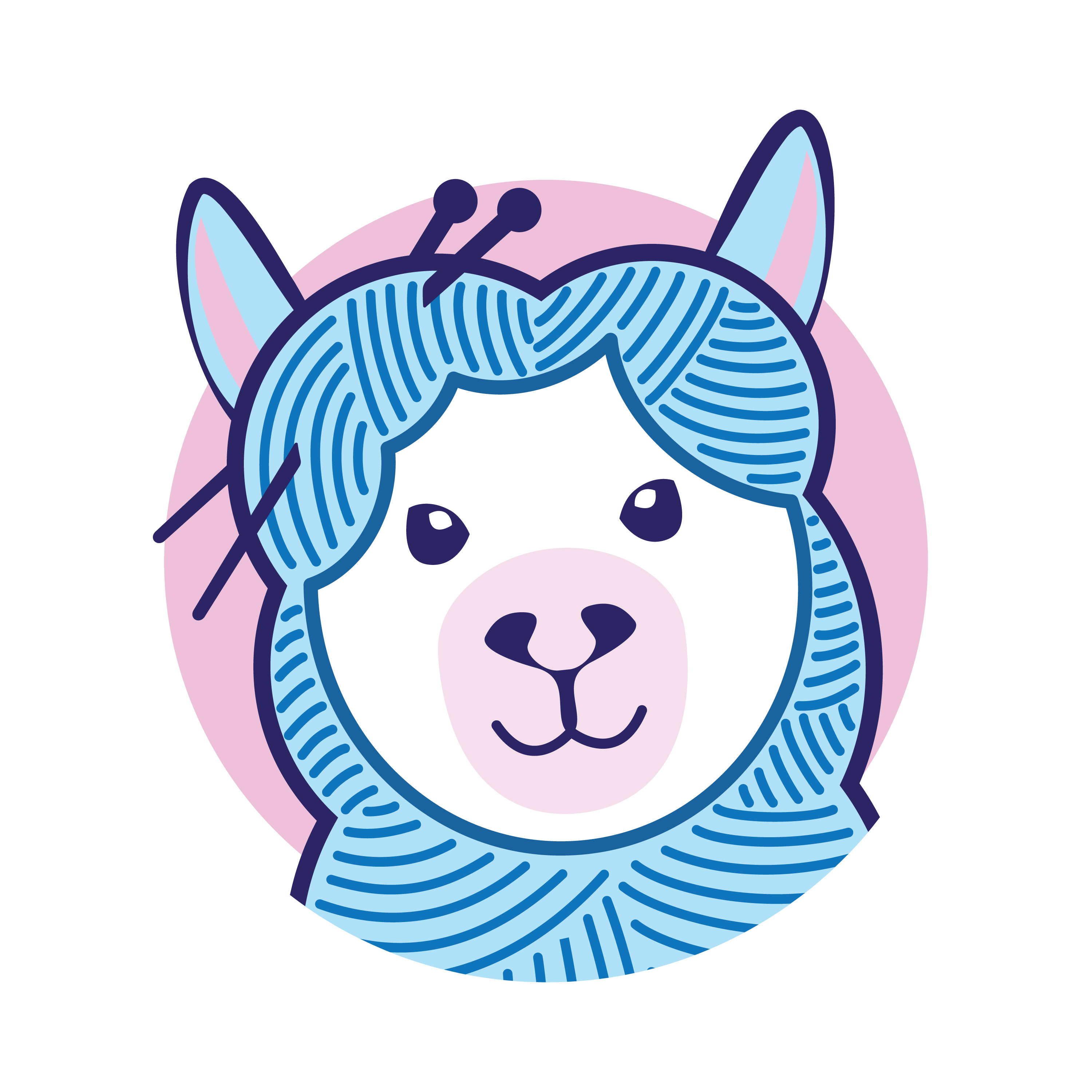- Home
- Must Have Supplies
- Knitting Kit for Beginners
Knitting Kit for Beginners: Everything You Need to Start Knitting
Learning to knit is fun, but it can feel overwhelming when you realize how many tools and yarns are out there. After a long hiatus from knitting, I decided to pick up my old needles again. So, I went into a JoAnn's store (before it closed) and was confronted with five aisles of knitting supplies and yarn. It was overwhelming to say the least.
That’s why starting with a beginner knitting kit makes so much sense. A good kit gathers everything you need in one place, so you can stop guessing and start creating right away.
Whether you’re teaching yourself, gifting a loved one, or returning to knitting after years away, this guide will walk you through what’s in a knitting kit, how to choose the right one, and a few of my favorite beginner projects to start today, and how to assemble one yourself.
You have two choices:
Purchase a Commercial knit kit
Purchase a few Knitting supplies to get you started
 Knitting Kit for Beginners
Knitting Kit for BeginnersThere are benefits to both. Keep reading to determine which option is best for you.
Essential Knitting Supplies for Beginners
| Category | Item | Purpose / Beginner Tip | Shop / Link |
|---|---|---|---|
| Must-Have Tools to Get Started Knitting | |||
| Knitting Needles | Start with straight bamboo or wooden needles, US 8 (5 mm) | Lightweight and slightly grippy — perfect for learning tension control. | View on Amazon |
| Yarn | Medium-weight (worsted) yarn in a light color | Shows stitches clearly and helps you see your progress as you knit. | Shop Yarn |
| Scissors | Small, sharp craft scissors | Trim yarn cleanly without fraying or snagging fibers. | See Options |
| Tapestry (Darning) Needle | Blunt needle with a large eye | Used for weaving in ends when finishing your project. | Buy Set |
| Measuring Tape | Flexible sewing or retractable type | Essential for checking gauge and finished size. | Find Here |
| Helpful Extras for Early Projects | |||
| Stitch Markers | Plastic or metal rings, clips, or loops | Mark pattern repeats or row beginnings; prevents counting errors. | Shop Set |
| Row Counter | Manual clicker or digital version | Keeps track of completed rows — especially useful for multi-row repeats. | Buy One |
| Point Protectors | Rubber or silicone caps | Prevent stitches from slipping off your needles during storage. | View Pack |
| Needle Gauge | Flat tool marked in US and mm sizes | Confirms needle size and measures gauge swatches accurately. | Check Price |
| Project Bag or Pouch | Fabric drawstring or zippered case | Protects yarn from dust and keeps supplies organized on the go. | See Bags |
| Supplies to Add Once You’re Comfortable Knitting | |||
| Circular Needles | Needles joined by a flexible cable | Ideal for large projects like blankets or knitting in the round. | Shop Set |
| Double-Pointed Needles (DPNs) | Set of four or five short needles | Used for small circular projects like socks or hat crowns. | Buy Set |
| Cable Needle | Short, curved needle | Holds stitches temporarily when making cable patterns. | View Here |
| Blocking Tools | Pins, mats, ruler, and spray bottle | Used to shape and smooth finished pieces for a professional look. | Shop Kit |
| Stitch Holders | Safety-pin–style tool | Keeps live stitches secure when pausing part of your work. | See Options |
| Light or Magnifier | Clip-on or neck light | Reduces eye strain and makes evening knitting easier. | Buy Light |
| Investment Tools and Storage Upgrades (When Budget Allows) | |||
| Yarn Swift | Collapsible wooden or metal umbrella-style tool | Holds skeins securely while you wind them into balls. | View Swift |
| Ball Winder | Clamp-on crank device | Turns skeins into neat, stackable “cakes” that feed yarn smoothly. | Shop Winder |
| Yarn Bowl | Ceramic or wooden bowl with cut-out swirl | Prevents yarn from rolling around or tangling while you knit. | Buy Bowl |
| Interchangeable Needle Set | Case of needle tips and cables | Lets you customize lengths and sizes without buying multiple pairs. | See Sets |
| Needle or Hook Organizer | Fabric or leather roll-up case | Keeps your collection tidy and prevents lost or damaged tools. | Shop Organizer |
| Storage Solutions | Baskets, bins, or stackable boxes | Great for sorting yarn by fiber or color and keeping projects accessible. | Find Storage |
| Yarn Scale | Digital kitchen or postal scale | Weighs leftover yarn so you can estimate yardage for future projects. | View Scale |
A commercial kit typically does not include most of these supplies, but it will come with yarn, needles, and a pattern. It is up to you to decide whether you prefer a ready-made kit that provides everything needed for one project or assemble your own personal knitting kit with additional supplies for multiple projects.
Why Start With a Knitting Kit
A knitting kit removes the confusion of picking individual tools and materials. Everything is coordinated and immediately available: yarn, needles, miscellaneous tools, and instructions
Benefits of Using a Beginner Kit
- No guesswork: all the essentials are included
- Ideal for learning at your own pace
- Great gift for new knitters of all ages
- Encourages finishing a project instead of collecting supplies
- Usually consists of a simple pattern (like a scarf or washcloth)
Many knitters still remember their very first kit. It’s a small box of possibility — soft yarn, smooth needles, and that first loop on the needle that begins a lifetime of creativity.
What’s Inside a Beginner Knitting Kit
While kits vary slightly by brand, most contain a thoughtful selection of tools and materials designed to help you master the basics.
Typical contents:
- Yarn: Typically medium (worsted) weight in a light or neutral color, allowing stitches to be easily visible.
- Knitting Needles: One pair, typically bamboo or wood, size US 8 (5 mm). These have a bit of grip and won’t let stitches slide off too easily.
- Tapestry Needle: For weaving in yarn ends.
- Scissors or Thread Snips: Small and sharp for clean cuts.
- Stitch Markers: Useful for counting repeats or marking the beginning of a round.
- Simple Pattern or Instruction Booklet: Often a scarf, headband, or square project.
- Optional extras: tape measure, row counter, gauge ruler, cable needle, or a small project bag.
Tip: If you’re making your own kit, you can easily assemble these items yourself using supplies from your local craft store or online. I'll provide some ideas in just a moment.
How to Choose the Best Kit for You
Not all beginner kits are created equal. Look for one that matches your learning style and your comfort level.
Consider these points before buying:
Skill level: Some “beginner” kits are actually intermediate. Read the description carefully if you are entirely new to knitting; my 'How to Knit' article might help you get started.
Project type: Choose something small and satisfying, such as a scarf, dishcloth, or cowl. If you choose a scarf, try to find one that uses chunky yarn, which will knit up quickly.
Materials: Bamboo or wooden needles are ideal for first projects; smooth wool-blend yarns are forgiving. Wool is terrific, but you will need to hand-wash your finished project.
Instruction style: Does it include photos, diagrams, or videos? Pick a learning format that suits you.
Budget: You can find solid starter kits from around $20 – $60, depending on the project and yarn quality. Some of the cheaper kits contain inferior supplies, which can be frustrating. For example, some of the most affordable kits contain plastic needles, which are difficult to use, or poor-quality yarns that split and tangle.
If you prefer flexibility, build your own kit by combining a few of your favorite yarns with basic tools — it’s just as practical and often more personal. The kit you assemble may include higher-quality supplies, which can ultimately save you money. Again, I'll provide some ideas below.
5 Best Knitting Kits for Beginners (2025 Update)
Here are a few kits worth exploring. I’ve selected them for clear instructions, quality materials, and positive user reviews.
1. Purl Soho Learn to Knit Kit
 Image: Purl Solo
Image: Purl SoloA beautifully designed set with premium yarn and clear step-by-step directions. Comes with options for scarves in garter, rib, or seed stitch.
The Kit includes Merino Wool Bulky Yarn, Pattern, Size 13 needles, and a Yarn needle.
Positives
- High-quality products with a choice of colors for the yarn
- Wooden Needles, which are great for beginners
- Large-eyed bent tip yarn needle suitable for working with bulky weight yarn
Negative
• Pricy
• You will need to provide your own scissors
• Yarn is wound in a hank and cannot be used until you wind it into a ball.
2. DMC “Serene Scarf” Kit
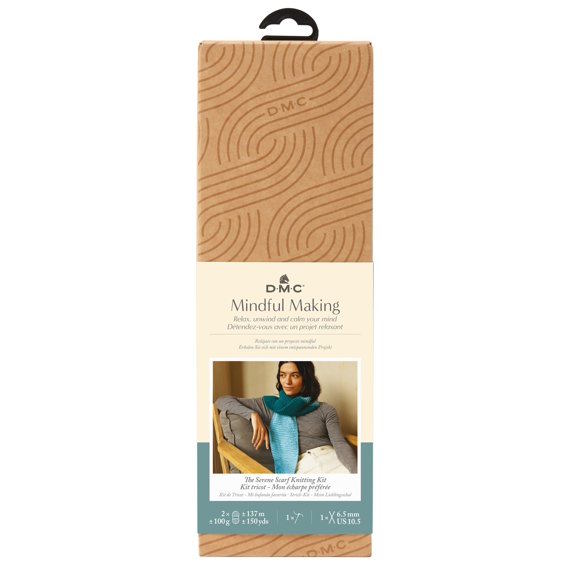 Image: DMC
Image: DMCAn affordable kit perfect for practicing the knit stitch and making a two-color garter stitch scarf.
Positive
- Budget friendly
Negatives
- The website does not say what type of yarn or what is included in the kit.
A similar kit for making a hat includes acrylic yarn and size US 17 plastic needles.
There is no mention of any additional items included in the kit.
3. Snug As a Bug Baby Blanket
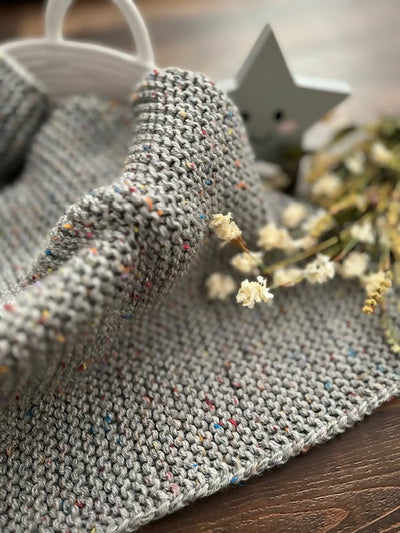 Baby Blanket Worked in the Garter Pattern
Baby Blanket Worked in the Garter PatternThis is a straightforward blanket pattern from Lion Brand, using their Heartland® Yarn. It's made entirely of garter stitches and worsted-weight (CKC #4), but two strands are held together and knitted, making the blanket very thick and warm. I comes in three sizes.
Positives
- Made with acrylic and rayon yarn, which means it's machine-washable
- Very easy: you need to know how to cast on, knit, and bind off.
- Relatively inexpensive
- Perfect first project
- No counting or need to follow a stitch pattern.
Negatives
- Since it is entirely worked in knit stitches, some people may become bored with the project.
Beginner-friendly Project Ideas:
It is sometimes difficult for beginners to know whether a project will be fun but challenging or unmanageable. A little mitten or baby bootie might seem like the perfect first project, but they are not. Stick to projects that are marked as Basic or Easy.

Smart-Knit-Crocheting Recomendations
All of these projects are included on Smart-Knit-Crochet and can be accessed by the links below.
- Seed Stitch Scarf worked entirely of the seed stitch pattern
- Garter Stitch Scarf: Knit every row for a soft, squishy texture.
- Simple Dishcloth: Practice knit and purl stitches on a small, useful piece.
- Ribbed Headband: Learn how purls and knits create stretchy fabrics.
- Double Seed Stitch Cowl: A great next project once you’re comfortable switching stitches.
- Hand Fingerless Mitts: Made with rib, stockinette stitch, and garter stitch.
- Knitted beanie hat that is worked flat and then seamed.
- Cotton coasters to add a festive touch to your table decor.
- An eyeglass or sunglasses case.
- Easy Beannie Worked in the round
Each project helps you practice tension, counting, and finishing — and gives you something practical to use or gift.
Assembling Your Own Kit
Creating your own kit is not difficult, and you will save money in the long run. You also have much more flexibility when creating a kit that is personal to you.
1. Decide what you want to make. The list above is a good starting point. Consider the time you have to devote to your new hobby. A dishcloth or a set of coasters might be ideal first projects because they are fast and can be as easy or as challenging as you want them to be. A blanket, on the other hand, can take time, and you might end up getting bored. Some scarves fall into this category, too.
2. Locate a pattern on this website. (See below)
3. Click on the photo to be taken to the free pattern. There you will find a list of supplies needed to make each product. Review the supplies and purchase them from your local yarn shop or online by following the links.
4. Locate the supplies needed for making your chosen project. These supplies will be listed on the project page and could include needles, yarn, scissors, tapestry needle, and stitch markers. Some also require a tape measure or ruler.
 Seed Stitch Scarf
Seed Stitch Scarf Coasters for Fall Decor
Coasters for Fall Decor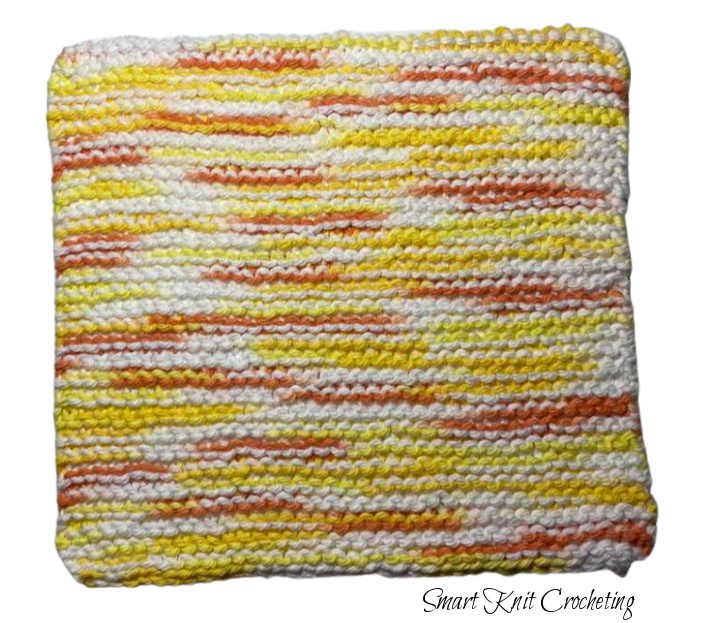 Garter Stitch Dishcloth
Garter Stitch Dishcloth Fingerless Gloves
Fingerless Gloves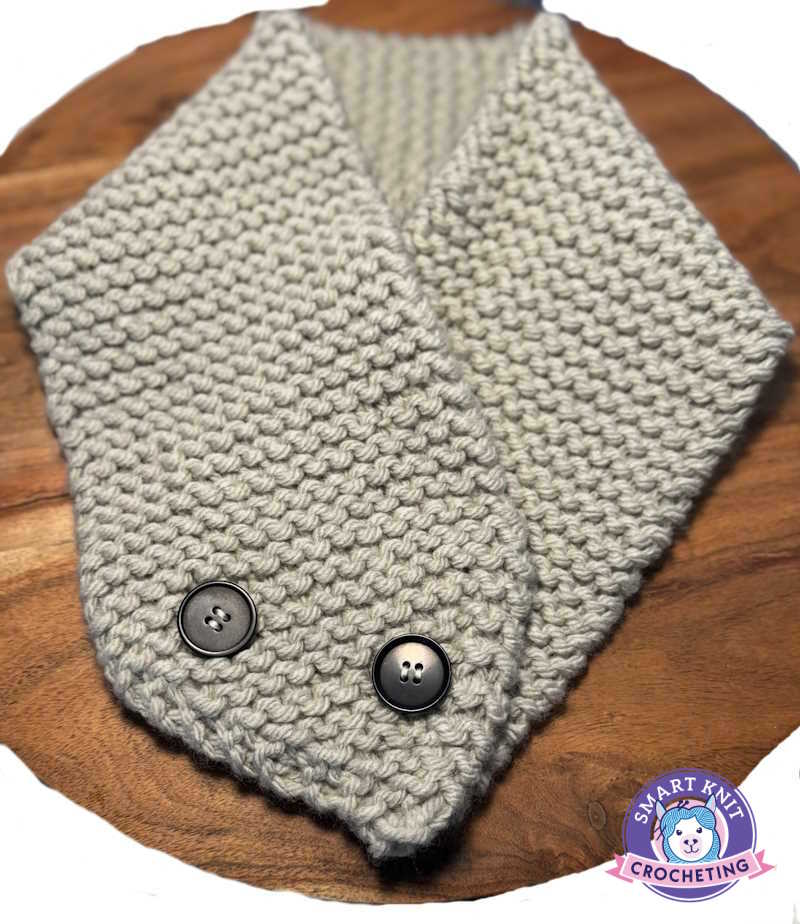 Garter Stitch Cowl or Scarf
Garter Stitch Cowl or Scarf Garter Stitch Beanie Worked Flat
Garter Stitch Beanie Worked FlatTips for Beginners
A few reminders to make your first knitting experience smooth and enjoyable:
- Choose smooth, light-colored yarn so you can see your stitches clearly.
- Keep your tension loose; tight stitches are intricate to move along the needle.
- Choose a pair of knitting needles made of wood or bamboo
- Pick up a few accessories when you purchase your yarn and needles. You'll be glad you did.
- Take breaks — your hands will need to adjust.
- Don’t worry about perfection. Every knitter drops stitches (even experienced ones!).
- Practice on a swatch, a five-inch square of fabric, using the same needles and yarn you will use for your main project.
- Learning to knit is similar to learning to play a musical instrument. Practicing a little every day will lead to perfection.
Frequently Asked Questions About Beginner Knitting Kits
What size needles do beginner kits use?
What size needles do beginner kits use?
Most beginner kits include size US 8 (5 mm) or US 10 (6 mm) needles, perfect for medium or bulky yarns.
Are knitting kits good for kids or teens?
Are knitting kits good for kids or teens?
Yes! Choose a child-friendly kit with chunky yarn, shorter needles, and bright colors for instant success.
Can I learn to knit from a kit alone?
Can I learn to knit from a kit alone?
Absolutely. Most kits include illustrated or video tutorials. Combine them with a good how-to-knit article (like the one on Smart-Knit-Crocheting.com), and you’ll progress quickly.
What’s the best yarn type for a first project?
What’s the best yarn type for a first project?
A smooth, non-slippery wool or acrylic blend in medium weight works best. Avoid fuzzy, fluffy, or dark yarns at first.
How long does it take to finish your first project?
How long does it take to finish your first project?
A simple scarf or dishcloth can be completed in a few evenings — the key is steady practice.
Conclusion: Start With One Kit, Then Keep Creating
Your first knitting kit is more than a bundle of yarn and tools — it’s your ticket into a creative, relaxing, and deeply satisfying hobby.
Once you’ve finished your first project, you’ll know what you enjoy and can build your own collection of tools and favorite yarns from there.
Start small. Be patient. Celebrate every row. Before long, you’ll look back at that first kit and smile — remembering the mom
Knitting Kits for Beginners: Pin Image
Next Steps
We'd love to see what you made with your first project whether it was from a kit or entirely on your own. Would you be interested in sharing?
Look What I Made
This is my very first knit project and I want to share it with youl

